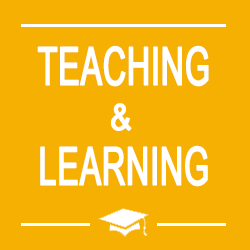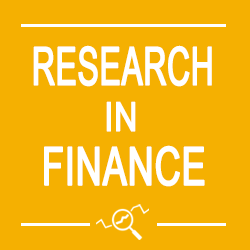
New on SimTrade?
Register for free and join the SimTrade community.
By connecting to this website you accept Terms of use.
 Insider trading
Insider trading
You work for Kopofrage Inc., a French biotech company specialising in the development of drugs aimed at curing or alleviating the effects of various diseases affecting both humans and animals. During the simulation, you will receive news about Kopofrage, a company whose shares are traded on the SimTrade platform. You will be able to buy and sell shares of Kopofrage. Your goal is to maximize your trading gain at the end of the simulation. At the start of the simulation, you own an account consisting of €50,000 in cash and 1,000 Kopofrage shares. Given yesterday’s closing price of €50.15, the total value of your position is more than €100,000. The duration of the simulation is initially set to 10 minutes which corresponds to a 24-hour trading day. Using the timeline, you can increase or decrease the simulation speed at any time. You must complete the simulation for it to be valid for your grade. |
Which trades does the law prohibits? Buying or selling stocks (technically known as “trading”) can be legal or illegal. Trading based on public information is legal, even if the trader is the CEO, an employee of the firm or any other insider. Typically, a CEO may decide to buy 1,000 shares of the corporation she works for. Trading based on nonpublic information that is likely to impact the share price (for examples information on earnings and merger plans) amounts to insider trading: it is illegal. It is not uncommon that the CEO, employees of the firm, as well as consultants, lawyers, investment bankers and other service providers for the issuer, know about a joint venture project, decreasing sales, or any other private information about the issuer, before it becomes available to the public. Penalties for insider trading are severe:
|
Your grade for this simulation (100 points) takes into account the following elements:
|
|
Kopofrage evolves in a highly competitive environment, as many other biotechs are seeking to treat the same diseases as those on which Kopofrage focuses. An additional difficulty is that the development of a new drug requires substantial high upfront expenses and can take several years (up to ten or fifteen years for some of them). Furthermore, new products cannot be commercialised before having successfully gone through the control and authorisation processes required on relevant markets and territories. In France, for instance, the National Agency for the Safety of Medicines and Health Products (ANSM) is competent to deliver a marketing authorisation (AMM) to companies which successfully went through a series of cumbersome tests and procedures aimed at verifying that the product is sufficiently safe to be commercialised in France and/or Europe. In the US, a comparable procedure exists before the Food and Drug Administration (FDA). The success of a new product in Kopofrage’s sector is thus highly uncertain and a biotech’s share price can vary considerably depending on whether or not it manages to obtain the necessary marketing authorisations. A variety of other factors are likely to impact the success of these companies and their share price: good or bad perception of their products by the general public, efficacy of the products, personal qualities of the managers, relationships with suppliers, etc. Since its initial public offering two years ago, Kopofrage nevertheless had several commercial successes that led its share price to grow by 80%. Among these successful products, we can mention its star product Kopippo (a drug curing various forms of cancer affecting hippopotami) and Cofrage (a treatment alleviating Covid-19 symptoms). Building on its past successes, Kopofrage is now considering launching new product lines. And now that its revenues are starting to grow and become more recurrent, it intends to raise debt from banks and capital markets. Kopofrage’s management also considers hiring new employees and expanding to new product markets and territories so that the company keeps scaling up. |
 |
After several decades of rapid growth, Kopofrage a successful initial public offering (IPO) in 2017. Since its introduction in the stock market, the stock price of Kopofrage (code: KPF) has steadily increased from its introductory price of €35. KPF shares are quoted in Paris stock exchanges. KPF shares are currently priced at approximately €50. |
 |
The section below has to be updated by using the events defined in the Excel file.
|
Today is an important day for NutriFood, as the firm will hold its annual General Meeting. At midday, the CEO of NutriFood will announce the profit for the last year. The expectation from the market consensus is an annual profit of €320 million for NutriFood. How much profit is NutriFood going to announce? Besides, public opinion remains shocked by the tsunami that ravaged the French Atlantic coast during the last week. The most important damage happened to the Mont Saint-Michel, which is an icon of the French culture. Unless an urgent reconstruction effort comes, most buildings of the Mont Saint-Michel may collapse. Consequently, the French State has set up a Super Fund to finance the massive cost of reconstruction of the Mont Saint-Michel. Many companies, both in France and abroad, have already volunteered to contribute to this fund. There is speculation that at the beginning of the day, the CEO may announce a corporate donation to the Super Fund. This rumor is plausible, as some of NutriFood competitors have already announced their willingness to donate to the reconstruction fund. However, companies vary in their level of commitment. Less generous companies are giving out relatively small amounts of money (less than 1% of their profit), while more generous companies are giving out large amounts of money (up to 30% of their profit). Which path will NutriFood take? Investors are also aware that today at 5 PM the government releases the Household Confidence Indicator (HCI) for the last quarter. The HCI has longtime been considered a reliable leading indicator of future economic activity. Thus, a decrease in the HCI would forecast slow economic growth, while an increase in the HCI would forecast fast economic growth. The market consensus about the HCI is its stability (i.e. 0-point change). However, some financial analysts debate about two possible scenarios: a 2-point increase or a 2-point decrease. Which will be the HCI figure for today? Finally, the new composition of the 100 Global Sustainability Index will be announced by the end of the day. For a firm, to be part of this index is widely seen as a recognition of its sustainable performance. Which will be the new composition of this Index?" |
Teaching objectives: the Kopofrage simulation will enable you to become familiar with the key concept of market efficiency and how the news flow impacts the evolution of financial assets market prices. You will also discover key determinants of success for a company in the Food and Beverages sector. Learning goals: the Kopofrage simulation will also allow you to acquire the following skills:
Before or after launching this simulation, you can obtain additional information on the financial markets by taking courses related to the simulation. |
 |
The data regarding your trading activity and your answers to the survey in the Kopofrage simulation will be used as part of a research project on behavioral finance carried out by Geneviève Helleringer (ESSEC Business School & University of Oxford), Kosmas Kaprinis (IE University), François Longin (ESSEC Business School) and Paul Oudin (University of Oxford). The data will be used anonymously. |
 |
Professor Geneviève Helleringer
|
|
Kosmas Kaprinis
|
|
Professor François Longin
|
|
Paul Oudin
|